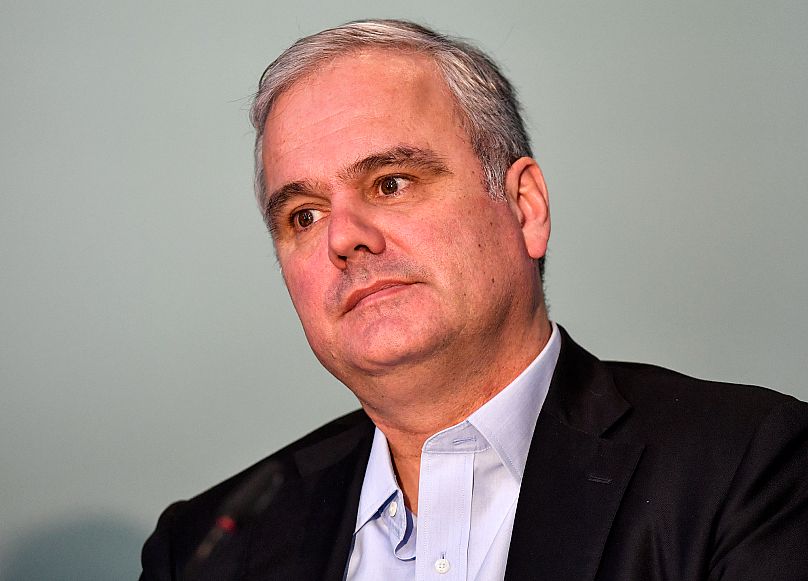EU Pharma Leader Urges European Nasdaq to Accelerate Biotech Innovation

EU Pharma Lobby Leader Advocates for a Dedicated Life‑Science Exchange
In a recent statement, the head of the European Union’s pharmaceutical lobby has urged the establishment of a specialized stock market for life‑science companies. The proposed platform would be comparable to the U.S. Nasdaq, specifically designed to foster innovation and keep investment within Europe.
Key Points of the Proposal
- Targeted Market Focus: A dedicated exchange would cater exclusively to biotechnology, pharmaceuticals, diagnostics, and other life‑science firms.
- Retaining Talent and Funding: By providing a local venue for capital raising, companies would be less inclined to relocate or seek funding elsewhere.
- Competitive Balance: The platform could level the playing field with U.S. markets, ensuring European innovators receive adequate visibility and support.
Implications for the European Innovation Ecosystem
The creation of such an exchange could transform how biopharmaceutical firms access capital, streamline regulatory compliance, and potentially accelerate the development of breakthrough therapies.
Next Steps
Industry leaders and policymakers are expected to engage in discussions to refine the concept, address regulatory hurdles, and secure funding for the initiative.
European Biotech Faces Capital Shortage, Calls for Nasdaq‑Like Market
At a press event last week, Stefan Oelrich—president of Bayer’s pharmaceutical arm and new chief of the EU drug‑makers group EFPIA—highlighted a pressing demand for finance reforms in Europe’s biotech scene.
Why a Nasdaq‑Style Exchange Matters
Oelrich urged the creation of an electronic marketplace analogous to the Nasdaq that would enable early‑stage companies to secure funding. He noted that the US market’s fully automated trading framework has historically attracted fast‑growing sectors—including life sciences—and served as an incubator for global tech giants such as Apple, Microsoft, and Google.
Current EU Investment Landscape
- Venture capital is severely limited, mainly because equity allocation tends to focus on established markets rather than high‑risk, high‑reward ventures.
- Without sufficient early‑stage funding, promising research carried out in European universities and institutes often exits the continent for better opportunities elsewhere.
- Funding gaps accelerate the migration of biotech talent and innovation toward North America.
Staying Rooted in Europe
“The step from laboratory discovery to a protected product usually relocates alongside the capital stream,” Oelrich warned. “Ensuring that European innovation remains in its birthplace requires a homegrown, equity‑driven finance ecosystem.”
‘Why don’t we do it?’

Stefan Oelrich Talks European Pharma Growth Ahead of Life Sciences Strategy
Background
Stefan Oelrich, the president of Bayer’s pharmaceutical division and recently named chief of the European Federation of Pharmaceutical Industries and Associations (EFPIA), issued a speech just before the EU released its newly promised Life Sciences Strategy. The strategy is designed to reestablish Europe as a premier destination for biotechnology research and development.
Key Concerns Highlighted by Oelrich
- Investment Gap: Oelrich emphasized that the disparity between venture capital, which fuels early-stage innovation, and Europe’s reliance on banking loans is growing.
- Fragmented Capital Markets: He pointed out that Europe’s capital markets are disjoined, making it difficult for start‑ups to access consistent funding streams.
- Short Loan Durations: Conventional bank financing tends to be limited in both volume and lifespan, hindering long‑term project planning.
Recommendations from the EU Strategy
- Strengthen Innovation Hubs: The policy recommends bolstering clusters of research and development to foster closer links with private investors.
- Integrate into Value Chains: By aligning hubs with the entire manufacturing and distribution chain, Europe hopes to attract greater private sector commitment.
- Limited Focus on Capital Markets Union (CMU): Despite Oelrich’s push for a comprehensive CMU, the strategy offers only minimal coverage of this issue.
Oelrich’s Call to Action
In his remarks, Oelrich voiced a strong desire for decisive steps:
- “It may sound ambitious, but it’s absolutely doable,” he remarked. “Curiously, everyone I speak with acknowledges the necessity, yet we have not moved forward.”
- He suggested redirecting a portion of Europe’s pension and life insurance funds toward venture capital, provided that political safeguards are put in place.
- “Innovation can thrive here, not because we lack capital, but because we fail to allocate it efficiently. We need a better system,” he concluded.
The broader context

Nasdaq Hosts Many of the Planet’s Biggest Tech Firms
While the Nasdaq is home to some of the globe’s most influential technology companies, the European Union’s efforts to build a fully integrated capital markets framework have stalled. Regulatory inconsistencies, uneven enforcement and political reluctance to deepen cooperation have slowed progress.
Capital Markets Union: Aiming for Greater Inclusion
The EU’s Capital Markets Union (CMU) is not designed to spawn new stock exchanges outright. Instead, it focuses on widening the flow of capital, especially to small and medium‑sized enterprises (SMEs). By easing funding options, this initiative could eventually prompt the establishment of niche or regional markets, though the overarching target remains a cohesive, rather than segmented, financial system.
Current Landscape in Europe
- There are no dedicated sector‑specific exchanges across the continent.
- Hybrids such as Euronext, the London Stock Exchange, Deutsche Börse, Nasdaq Nordic, and SIX Swiss Exchange list companies spanning a broad spectrum of industries.
- Instead of creating new venues, the EU capitalises on sector‑focused investment via indices like the STOXX Europe 600 family, which tracks banking, automotive, leisure, and other key sectors.
Bio‑Tech: A Special Case
Despite these resources, many biotech enterprises still find themselves without a specialised capital‑raising channel. Whether the EU will identify and implement a dedicated platform for this dynamic industry remains uncertain.





